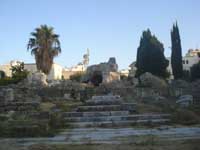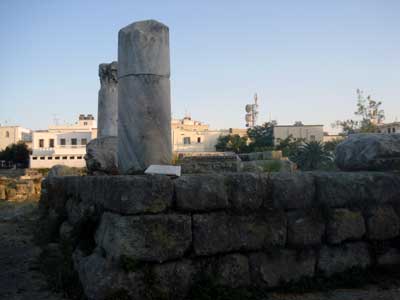Ancient city of Kos
The Ancient city of Kos
 The archaeological excavations in the ancient city of Kos started by the Italian
Archaeological School of Athens during the Italian occupation of the Dodecanese.
The archaeological excavations in the ancient city of Kos started by the Italian
Archaeological School of Athens during the Italian occupation of the Dodecanese.
In 1926 Giro Drago investigated the Theatre and since 1928, when he became
Director of the Archaeological Mission of Kos he made extensive excavations and
surveys throughout the island. In 1929 pointed out the location of the
necropolis and in 1933, on the occasion of the new urban plan after the
earthquake, he delineated the archaeological zones existing today and began
systematic excavations.
The archaeological findings suggest that the ancient city of Kos was built
according the Ippodamius system, ie roads oriented towards North-South direction
and perpendicular to them, towards East-West direction. This rule is violated in
the NW area of the city because of the existence of a hill, where originally
stood the citadel of Kos.
The excavations further showed that the ancient Kos had all the typical public
buildings of a prosperous Greek city: strong perimeter walls, fortified port,
market, altars like the altar of Dionysus, theater, baths and Gymnasiums, which
occupy the greater part of the walled city. Another sign of prosperity is the
plethora of mosaic floors, the total area of which is estimated to exceed
4.000sq.m during the Italian rule some of them were detached and transferred to
the Palace of the Grand Master in Rhodes. The excavations have brought to light
the infrastructure of the city during the Hellenistic and Roman times, whilst
only a few sites have been preserved from the time of the earlier settlement of
Kos, due to the intense seismic activity in the area.




